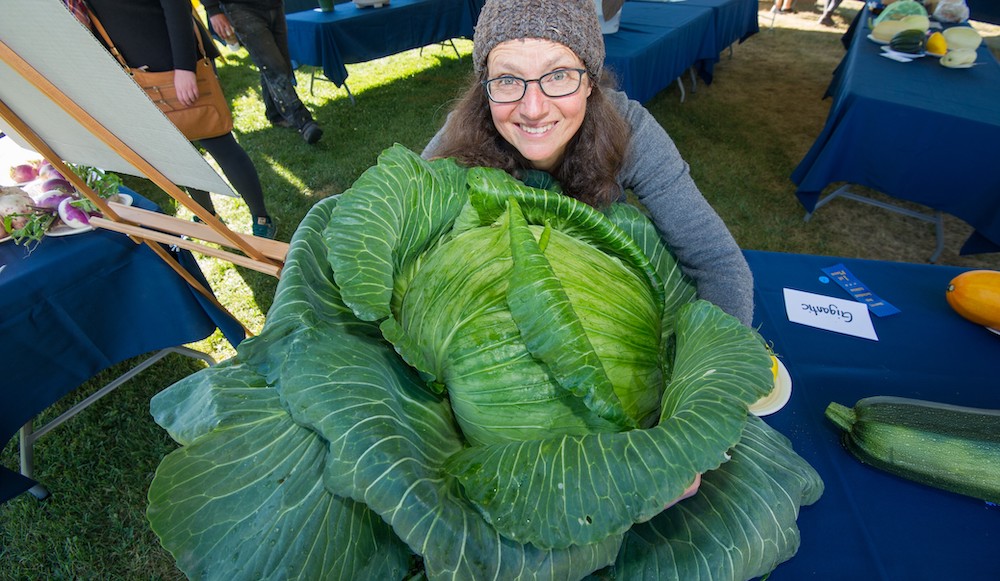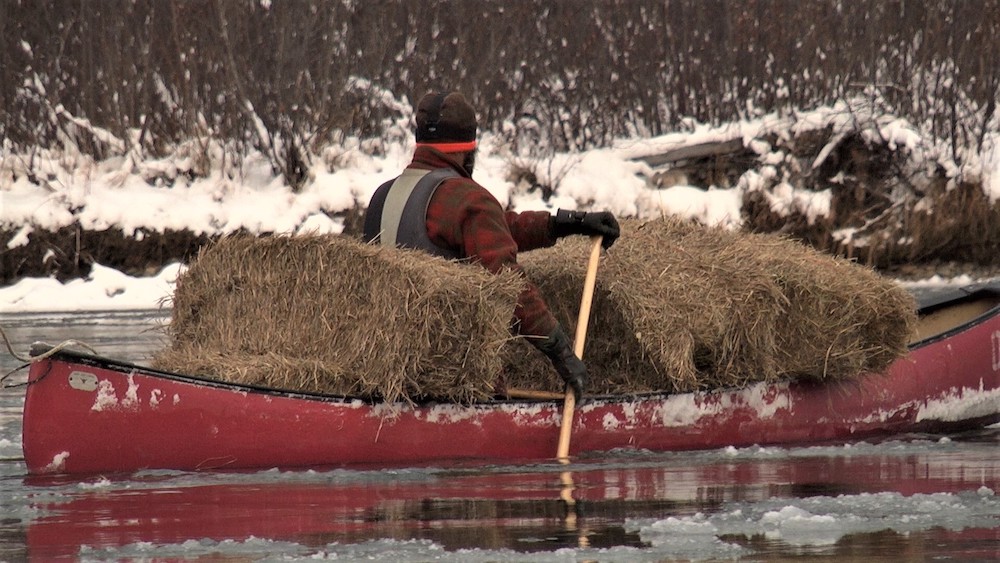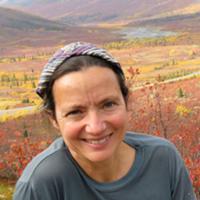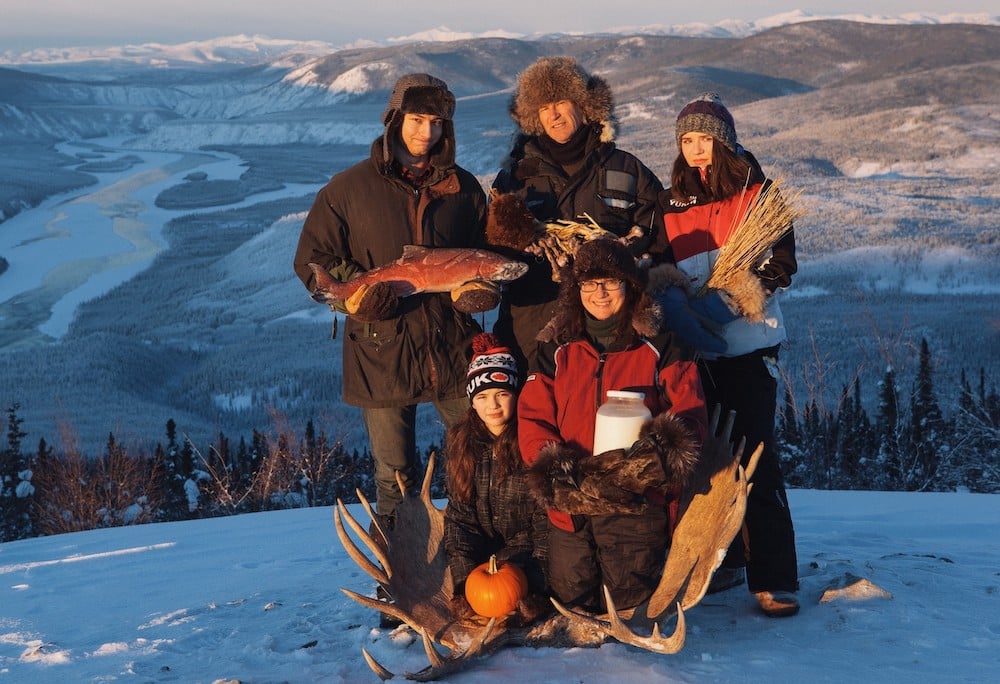[Editor’s note: Suzanne Crocker is a Yukon physician turned filmmaker, whose documentary about her family living on just locally-source food, First We Eat, is getting rave reviews. Watch the trailer below and see the sidebar for more on the film.]
I haven’t eaten a piece of broccoli in nine months. Not because I have anything against broccoli. But because it’s been nine months since it has grown where I live — in Dawson City, Yukon, 300 kilometres south of the Arctic Circle. I will relish the taste of broccoli in another month when it once again fills the bins at my local farmers market. And then I will give it up in the fall. And you know what? I’m OK with that.
A few years ago, I spent an entire year with no grocery store food in my house — feeding my family of five only food that can be hunted, fished, foraged, grown or raised around Dawson City. In the process, I was forced to eat seasonally. “Joyous” is not a word I usually use. But having recently chomped into my first leafy greens after a long Yukon winter, I have discovered that eating seasonally is actually quite joyous. The appreciation I will soon feel for my first slice of cucumber, the burst of flavour from a ripe cherry tomato exploding in my mouth and, of course, the sweetness and crunch of that first piece of broccoli — is worth waiting for! It reminds me of the days when mandarin oranges were only available at Christmas and how special that was.
So how do I cope without a leafy salad all winter? How on earth do I make a stir-fry without fresh broccoli? I have discovered the cabbage. The carrot. The kohlrabi. Root vegetables that store fresh all year in a root cellar getting sweeter and sweeter by the month. Fresh sliced cabbage and shredded carrot with your favourite dressing in the middle of January — yum! Didn’t miss lettuce at all. For a stir-fry, add in a handful of kale or chopped peppers that went directly from the garden to the freezer in the fall. Delicious.
There is an old saying: in the summer, you eat above the ground. In the winter you eat below the ground. And that is exactly what I have found my body craves. By fall, the idea of salad is no longer appealing. I crave potatoes and turnip. By summer — bring on the greens!
Imagine only buying things at the grocery store that are produced in your own province. You would quickly come to understand the season for broccoli. And when strawberry season rolled around, you could count on a strawberry tasting like a strawberry or a fresh tomato actually tasting like a tomato — rather than being lured by look alike, flavourless clones year-round.
If the distance your food travels doesn’t concern you. And if you don’t really care about flavour. What about nutritional value? I was rather shocked to learn that 75 per cent of the vitamin C and almost 50 per cent of the folate in fresh spinach are lost within five days of picking. I wondered how much nutrition was left by the time fresh spinach from afar reached my plate. Nutritionally, among other things, in January it would make more sense to buy frozen spinach produced in your own province rather than fresh spinach from far away.
I learned a lot about myself eating 100-per-cent local to my northern community.
I am way more adaptable than I thought I was! The idea of going a year without avocados, nutritional yeast on popcorn, and my precious cup of orange pekoe tea (both drug and comfort food) was rather overwhelming. And I really wasn’t sure I could go a whole year without chocolate. I imagined a year of suppressed cravings that would have me running to the store by year end. But I surprised myself. After the first couple of months, I actually didn’t miss any of those “must haves.” A shot of birch syrup on the occasional desperate day took the place of a piece of dark chocolate. By the time the year of eating local ended, I had no desire to go to the store. And, when I did finally force myself to taste those foods again, they were disappointing. (You can find a list of all the available local ingredients we used here and some recipes here.)
So how could I survive without caffeine to kick start me in the morning and get me through the mid-afternoon slump? At first, I was exhausted and had to resort to afternoon naps. Not very practical for a working mother. Out of desperation, I started going to bed earlier, no longer forcing myself to stay up late to “get things done.” The crazy thing is that eventually I found I had more energy off caffeine than I did on it.
What about cooking staples like lemon juice? Rhubarb juice is the answer. A Béarnaise sauce made with rhubarb juice — you would never know the difference. Lemons don’t grow in my backyard, but rhubarb certainly does. The best way to juice rhubarb? Chop it, freeze it, thaw it, squeeze it!
How do you make a salad dressing without oil or vinegar? Toss frozen berries, garlic and birch syrup in the blender. Rivals an oil and balsamic vinegar dressing any day of the week!
No yeast? The pandemic has taught us all the answer to that one. Sourdough starter. In my case made from scratch thanks to the natural yeast found on juniper berries.
Baking powder? Whipped egg whites. Although honestly, for me, the absence of baking powder didn’t really matter much as there was very little grain to begin with.

OK, salt you say. How do you live without salt? For the first two months, everything tasted very bland. But then my taste buds changed — they came alive! I could taste the flavours in my food again. And it was delicious. Spinach actually tasted salty. As did tomatoes and celery and moose bone broth — yum. If you eat meat and fish, physiologically you don’t actually need added salt. I tested my blood every three months just to prove it. As far as preserving food without salt, there is still pressure canning, smoking and of course freezing. In the Yukon, the outdoors is my freezer eight months of the year!
Iodine is another matter. It is added to table salt to prevent thyroid deficiency. Just like Vitamin D is added to commercial milk. Iodine, I haven’t figured out yet. My iodine levels did drop without commercial salt.
Vitamin D — solved. Burbot liver! Burbot being a bottom-feeding fish that one is allowed to catch through the ice only in the depths of winter. How naturally symbiotic, since winter is when we are most in need of extra Vitamin D that our bodies normally manufacture on their own when exposed to sunlight.
Another surprise — the grazing I can forage from my own yard. Once I learned to see with new eyes, weeds became food. Now I munch while I “weed” the garden.
And then there is the tremendous amount of nutrition and flavour in the parts of the animal that we don’t always think of. The sacrifice of an animal’s life is not just for roasts and steaks. There is tremendous flavour from bones. Blood is full of nutrients. Roast moose heart is to die for. Moose tongue pastrami. Liver. Kidneys. Head. Bum guts. Nose — well I must admit, although a delicacy to the Tr’ondëk Hwëch’in elders, moose nose remains an acquired taste for me!
I am paralyzed by choice. I suspect this is partly why I choose to live so remotely. When you live in a community of 1,500 people, 550 kilometres from the nearest big box or chain store, you learn to appreciate a lack of choice. Especially when shipping something to Dawson costs twice as much as the item itself.

Before my year without grocery store food, I didn’t like cooking and I wasn’t very good at it. But limit my ingredient choices, force me to find creative ways to “cook within my means” and lo and behold, I started to enjoy cooking and I actually became quite good at it!
I have also learned to appreciate the terroir of food. Taste and variety depend on the soil and the geography. My cabbage doesn’t taste like your cabbage. (For the sweetest cabbage ever, come to Dawson City!). And the only protein sources that can be produced in my community are animal based.
It is not realistic to expect folks to take all the grocery store food out of their house as I did. But I give you this challenge. Look at the labels on the food you buy at the grocery store and consider only buying things that are produced in your own or neighbouring province. This may mean not having fresh broccoli in your stir-fry in December. Instead, find out what is still available from your province mid-winter and be open to new possibilities.
Check out the frozen fruit and veggie section for what was locally produced. Discover the joys of eating seasonally. You will come to be in tune with the seasonality of foods and you will be guaranteed to get the best tastes.
Seek out a few food sources that are uber-local. Local eggs are often one of the easiest things to find.
During harvest season, visit your local farmers’ market. You will enjoy getting to know the people who grow your food.
If your business has outdoor planters and garden boxes, consider planting berry bushes, or snap peas instead of shrubs or flowers — foods that passersby can graze upon. Space to grow food to feed us is precious. Big spaces or small, urban or rural, food can be grown almost anywhere. Lettuce can be grown vertically in a potting soil bag on a balcony; basil can grow on a windowsill.
The pandemic has opened everyone’s eyes to the fragility of a supply chain that comes from far away.
It's time to shorten the food chain. We should start relying on food from closer to home for the essentials. And start recognizing food from far away for what it is — a luxury. In this way we can build strong local food ecosystems. And when the next crisis comes our way, we can feel secure that we can, at least, feed ourselves.
After all, “First we eat, then we do everything else.” — MFK Fisher.
Also in the first day of this series, an interview with 100-Mile Diet creators Alisa Smith and J.B. MacKinnon 15 years after the concept was launched here on The Tyee. ![]()
Read more: Food

















Tyee Commenting Guidelines
Comments that violate guidelines risk being deleted, and violations may result in a temporary or permanent user ban. Maintain the spirit of good conversation to stay in the discussion.
*Please note The Tyee is not a forum for spreading misinformation about COVID-19, denying its existence or minimizing its risk to public health.
Do:
Do not: